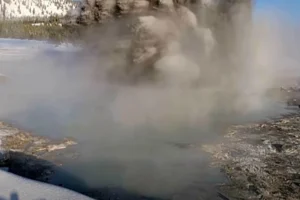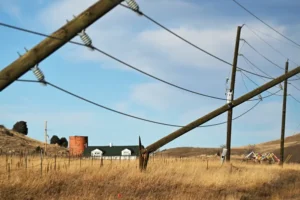WYOMING SCHOOLS AT A CROSSROADS: Teacher Apprenticeship Builds Workforce to Combat Teacher Shortage
Initiative will offer free bachelor’s degree, mentorship and on-the-job training to build teacher pipeline across Wyoming
- Published In: Other News & Features
- Last Updated: Oct 20, 2022
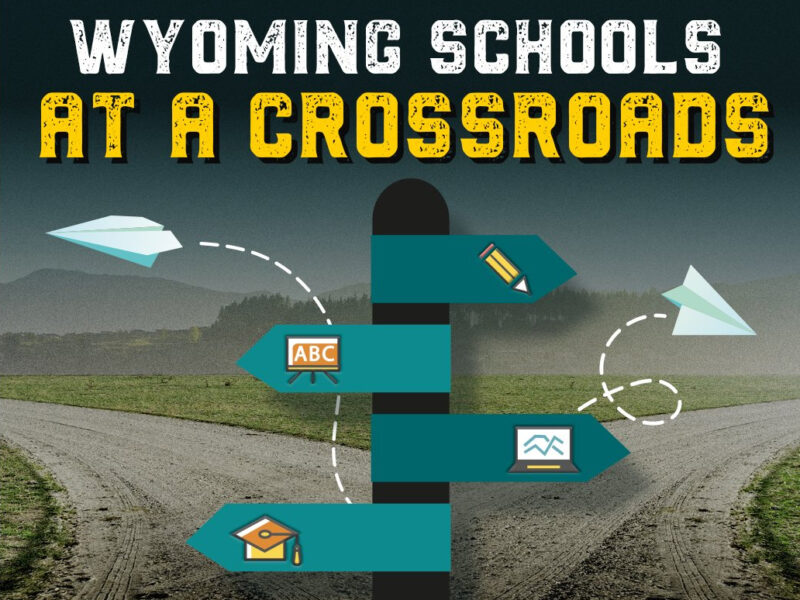
By Elizabeth Sampson
Special to the Wyoming Truth
Earning a paycheck while receiving on-the-job training and a free college education adds up to a smart way to become a teacher In Wyoming. The Wyoming Department of Education and the Professional Teaching Standards Board are addressing the state’s teacher shortage by turning to a new plan to implement an old way of learning: apprenticeships.
On Wednesday, the U.S. Department of Labor approved the state’s apprenticeship program standards at a signing ceremony in Cheyenne, allowing schools participating in Wyoming’s pilot program to begin accepting applications.
Apprentice teachers will train with a mentor teacher in a classroom while earning a bachelor’s degree in education. Participating Wyoming schools will build a qualified workforce for the state—and possibly establish a faculty pipeline for their own buildings.
“There’s a lot going into helping you become a really strong teacher,” said Laurel Ballard, state director of digital learning and innovation with the Wyoming Department of Education. “It’s intensive training and access to a classroom that you just don’t receive in the same way in a traditional program.”
Chad Auer, deputy superintendent of public instruction, said the department initiated the apprenticeship program to combat the state’s teacher shortage. As of Oct. 19 there were 47 openings for teachers and paraprofessionals listed on the Wyoming School Board Association’s website, down from 54 on Sept. 20.
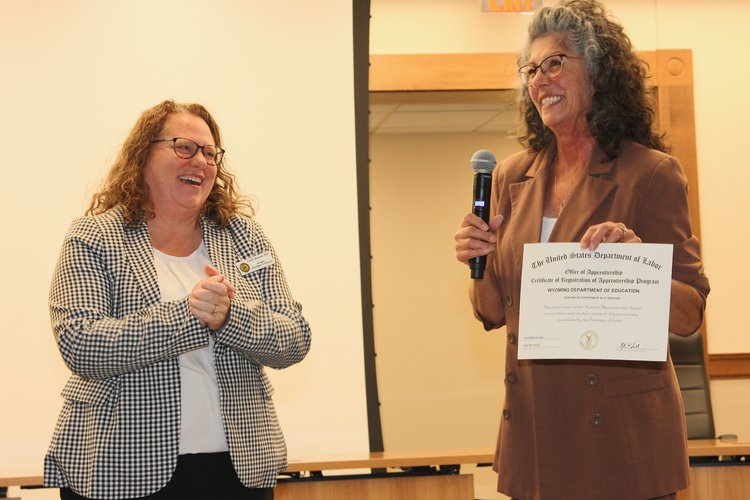
“A number of states around the nation have implemented similar programs,” Auer said in a statement to the Wyoming Truth. “After consultation with a wide range of stakeholders across Wyoming, it was clear that Wyoming would benefit from our own apprenticeship initiative. Ultimately, we hope that this program will become a pathway to welcome more people into the profession.”
Ballard and Brendan O’Connor, executive director of the Professional Teaching Standards Board, organized the apprentice program in collaboration with the three pilot districts—Laramie County School District 1, Teton County School District 1 and Fremont County School District 24. They also are working with the state’s community colleges, the University of Wyoming, the Department of Workforce Services and the governor’s office.
Districts struggle to fill teacher openings
Bruce Thoren, superintendent of Fremont District 24 in Shoshoni, hopes to take on six apprentice teachers, as the district is struggling to fill faculty openings, especially secondary and content-specific positions. Five years ago, Shoshoni received between three and 10 applicants per posting, but that is no longer the case, Thoren said. Colorado, Nebraska, Idaho and Montana increased teacher salaries, so the number of out-of-state applicants has declined, too.
“I’m really looking forward to it from the perspective of growing our own—people who want to be in this community and are committed to this community,” Thoren said.
Registered apprenticeships must meet several requirements to receive federal approval from the labor department: on-the-job training, related technical instruction, participating employers, progressive pay raises as knowledge increases and national occupational credentials upon completion.
The state’s program will include between 2,000 and 6,000 hours of job training, depending on the number of classroom hours apprentices already have when they start the program.
Ballard and O’Connor anticipate that Phase 1 applicants will mostly come from the ranks of substitute teachers or classroom paraprofessionals, as they can use previous classroom experience toward their hours. However, any district employee—such as a food service worker or bus driver—who already has an associate degree is qualified to seek the apprenticeship.
Wyoming Education Association President Grady Hutcherson supports the apprentice program, noting that it serves “a valuable purpose as one small part of an overall action plan to recruit and retain high-quality teachers” in public schools.
“Giving paraeducators this avenue to earn their teaching degree elevates their opportunities and earning power,” Hutcherson said in a statement to the Wyoming Truth. “It also means we are preparing future teachers who already know what it’s like to work in our public schools and thus have a better understanding of the weight of expectations and responsibilities borne by our education employees,”
Phase 2 apprenticeships will be open to anyone with a high school diploma or GED, while Phase 3 will include a pre-apprenticeship program for students who are still in high school and can then apply for the apprenticeship upon graduation.
Throughout the training hours, the apprentices will be required to demonstrate competencies like managing a classroom, helping students use technology, working with parents and families and collaborating with their peers. Organizers expect to enroll 30 apprentices in the pilot program.
O’Connor said technical training will take place at the college or university the apprentice chooses to attend, with the cost covered by the apprenticeship program.
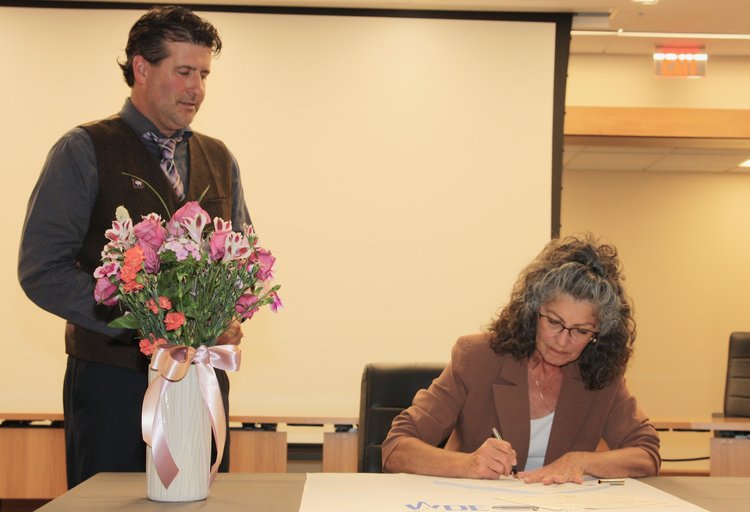
“Ideally, we are shooting for more online and non-daytime offerings, so that those people can concentrate on their apprenticeship while they are in the school building during the school day, taking their courses at night or on weekends or however their schedule would allow,” O’Connor said.
Apprentices will complete the three-year program with a bachelor’s degree, as well as meet all licensing requirements of the state’s Professional Teaching Standards Board.
Apprentices get their own classroom after graduation
Ballard and O’Connor acknowledged an initial misperception of the apprenticeship program as being a watered-down version of a traditional path to teaching. Critics assumed the apprentices would be in their own classrooms right away.
“That’s really not what we’re doing,” Ballard said. “They have to complete all the same course work, all the same licensure requirements. They get three years in the classroom with mentorship, plus they have to demonstrate these competencies, and so there are some additional requirements on them that you don’t have in your traditional model.”
Funding has yet to be secured. The total cost per apprentice is estimated at $150,000, including college tuition, a district paycheck for the apprentice and a stipend for mentor teachers. Organizers are partnering with the pilot school districts to apply for federal grants for salaries, as well as seeking college funding for their apprentices through federal Pell Grants, the Hathaway scholarship and the anticipated Wyoming’s Tomorrow scholarship, a state-supported scholarship aimed at supporting non-traditional students aged 24 and older.
Apprenticeship openings are expected to come online during the second semester of this school year at the three pilot schools selected for Phase 1; these slots are designed for people who currently live in those districts. O’Connor said that recruiting an apprentice from out of state—someone who is not familiar with life in a small town like Shoshoni or the expense of housing in Jackson—might not be a good fit.
“[Locals] know the communities,” he said. “Hopefully, it will help them stay in those communities as well. That helps with the longevity and the retention moving forward.”
Added Ballard: “The school district has three years to mold this teacher into exactly what they are looking for—with how they do things in the district, how they work, their local context,” she said. “When they walk in as a first-year teacher, they [will] already have all of that.”


